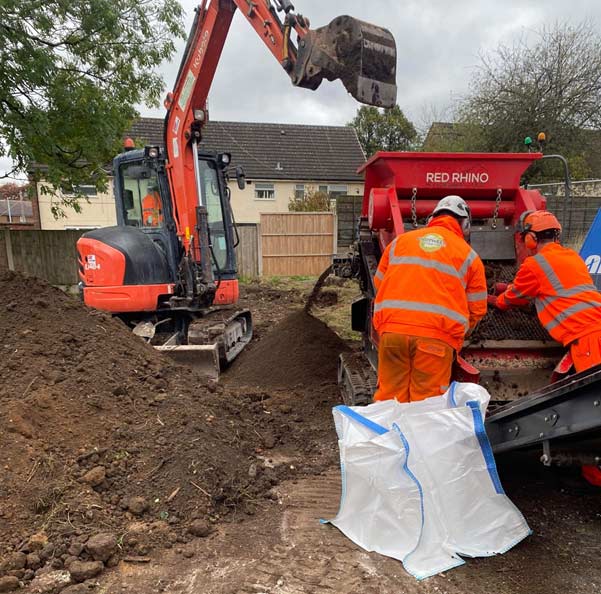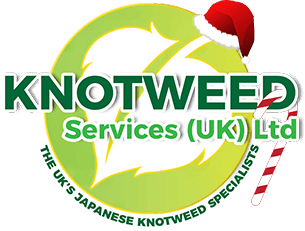JAPANESE KNOTWEED REMOVAL Wakefield
5
LIVE KNOTWEED JOBS IN Wakefield
17
SUCCESSFUL KNOTWEED REMOVAL PROJECTS IN Wakefield
100%
SUCCESSFUL PROPERTY SALES AFTER TREATMENT
2
Wakefield BASED KNOTWEED STAFF
Knotweed Eradication Wakefield
Knotweed services is a highly professional company with years of experience which specialise in Japanese knotweed removal, control, and treatment for properties located in or around Wakefield.
Knotweed Services is an approved member of the PCA, a government-recognized organization whose members provide the best methods for removing Japanese knotweed.
Knotweed Services, we are a company with the goal to help people with knotweed problems. We have completed large and complex eradications in and around Wakefield and England.
The One And Only Japanese Knotweed Treatment Service
Knotweed Services has extensive experience in all areas of Japanese knotweed management. If you’re a home owner and concerned about whether your mortgage provider will lend against your property, we can help by carrying out a survey and providing you with the management plan you need to move your sale or purchase forward.
If you’re a commercial land or property owner and knotweed is present, your project could be delayed until the harmful plant is removed.
Japanese Knotweed, a very troublesome weed
- Japanese knotweed can grow through asphalt and concrete, which poses a threat to your building or property.
- Lenders often refuse to lend against a property that has Japanese Knotweed growing on it.
- Knotweed grows so thickly as to block visibility and access to paths, highways, and other infrastructure. Knotweed is a particular nuisance for commercial properties.
Knotweed Services For customers in Wakefield with Japanese Knotweed, we should be your first call. We’ll always ensure that the knotweed is removed entirely and our warranty guarantees (insurance-backed guarantee available).



FREE IDENTIFICATION
Fill in the form below, attach your pictures and we’ll let you know if the plant in your picture is Japanese Knotweed.
Call us now to undertake the treatment and management of your knotweed problem in Wakefield
Call us on: 0121 725 6348 or 0800 689 4146 for an immediate cost
Knotweed Services will provide you with step-by-step guidance from the time we first contact you until we complete your project.
RESIDENTIAL JAPANESE KNOTWEED REMOVAL Wakefield.
WHAT YOU NEED TO KNOW ABOUT JAPANESE KNOTWEED REMOVAL Wakefield
Because Japanese knotweed infestations can vary considerably from property to property, it’s not surprising that treatment and control will too. It may be necessary to use one method or a combination of different knotweed removal methods.
As we work with nature, our Japanese Knotweed specialists consider all factors and choose the best way to deal with Japanese Knotweed. We offer a guarantee covering Japanese Knotweed treatment.
— JAPANESE KNOTWEED REMOVAL OPTIONS AVAILABLE IN Wakefield

FOLIAR SPRAYING *
The most commonly used method of treating Japanese knotweed is with herbicide. This is done by spraying the plant with a knapsack sprayer in early spring.

FOLIAR LEAF WIPING *
With this Japanese knotweed treatment, our chemicals are “physically wiped” into the leaves of the Japanese knotweed using a device. This application is so accurate that we can frequently employ a greater chemical concentration.

STEM INJECTION
We apply a controlled amount of herbicide directly into the invasive weed. Due to being injected directly into the Japanese Knotweed, this is the most crafty method of removal. It isn’t dependent on the weather.

BIOMASS REDUCTION
Biomass is a form of excavation and removal but instead of extracting all of the soil impacted by Japanese Knotweed, we only remove the infested parts of the soil. It’s an excellent Japanese Knotweed control method that allows the reuse of the soil. Reducing the use of landfill.

CROWN REMOVAL
Crown and stems can regenerate, and even small bits of chopped crown or stem can regenerate and become a new invasive weed; removing these from the equation is a fantastic method.
— COMMERCIAL TREATMENT OPTIONS AVAILABLE IN Wakefield

SOIL SCREENING
A tried-and-true methodology used on hundreds of sites throughout the UK
Using the screening method, the Japanese knotweed rhizome material is separated from the soil material. The Japanese knotweed material is then either transported to a licenced landfill at a much lower disposal rate or incinerated on site using a D6 exemption from the Environment Agency or Natural Resources Wales.
The cleaned soils can then be used elsewhere, usually in soft landscaping areas, where they won’t be in the way of building.
This can significantly reduce landfill and backfill costs while also helping to reduce the carbon footprint on site due to fewer vehicle movements to the landfill.

BIOSECURITY SUPERVISION
We can provide a biosecurity operative to monitor any excavations or movement of Japanese knotweed-containing soil on your property.
As part of these measures, we can set up a place at the entrance to the site where people can wash their boots and machines. We will provide all toolbox talks for the main contractor on site, which will be signed by all contractors involved in the operation on site.
We can provide temporary geotextile barriers in areas where biosecurity is required.
Once the work has been completed, we will provide the client with a full biosecurity report.
This method can be used in conjunction with other treatment methods on site.

EXCAVATION AND DISPOSAL
This treatment method is ideal where time constraints are present and there’s no other option other than to remove both the Japanese Knotweed and contaminated soil to a registered landfill.
By removing all traces of the infestation quickly, this offers a rapid solution to your problem and allows your commercial project to begin groundwork’s almost straight away. When time is of the essence, there is no quicker Japanese Knotweed removal/treatment method.
Any waste taken off-site will be done so with a licensed waste carrier to a suitably authorised landfill site.

CELL BURIAL
Cell burial comprises of moving Knotweed contaminated soil from one location on site, burying it in an excavated pit which is lined with a root barrier membrane, in a different position on the site.
The burial requirements for Japanese Knotweed are as follows:
- The Environment Agency recommends that the top of the burial cell should be a minimum of 2 metres below ground level.
- The overall depth of the burial pit should be in excess of 5 metres deep. All root barrier seams are welded together forming an encapsulated cell from which the Japanese Knotweed cannot escape. Clean soil is then used to backfill on top of the cell.
- To prevent accidental disturbance of the burial site, it is recorded on all site plans and future land owners should be made aware of the location.

STOCKPILE & TREAT
Japanese knotweed-contaminated soil can be moved to another portion of the site being treated using a technique called bunding. A bund is a patch of polluted soil that is only a few metres deep.
To make the surface flush with the surroundings, the bund can either be lifted, placed on top of the land, or positioned inside an excavation.
The bund’s function is to relocate the Japanese knotweed to an inactive portion of the land. The Japanese knotweed may now be treated, which would not have been possible in its original location.

HERBICIDE APPLICATION
At Knotweed Services we can provide the client with bespoke treatment plans depending on the locations of the Japanese knotweed.
These plans can work in conjunction with other methods of treatment where access is limited to pedestrian movements i.e., embankments or existing pathways within a site.
This will normally consist of up to 3 visits per annum to apply herbicide by either foliar spray technique or stem injection during the growing season over a period of 3 years, with a monitoring period of 2 years thereafter.
We would select the appropriate herbicides depending on the surrounding foliage or environmental constraints.
After each visit a full treatment record would be provided with photos showing the progress of the works and then an annual report.
